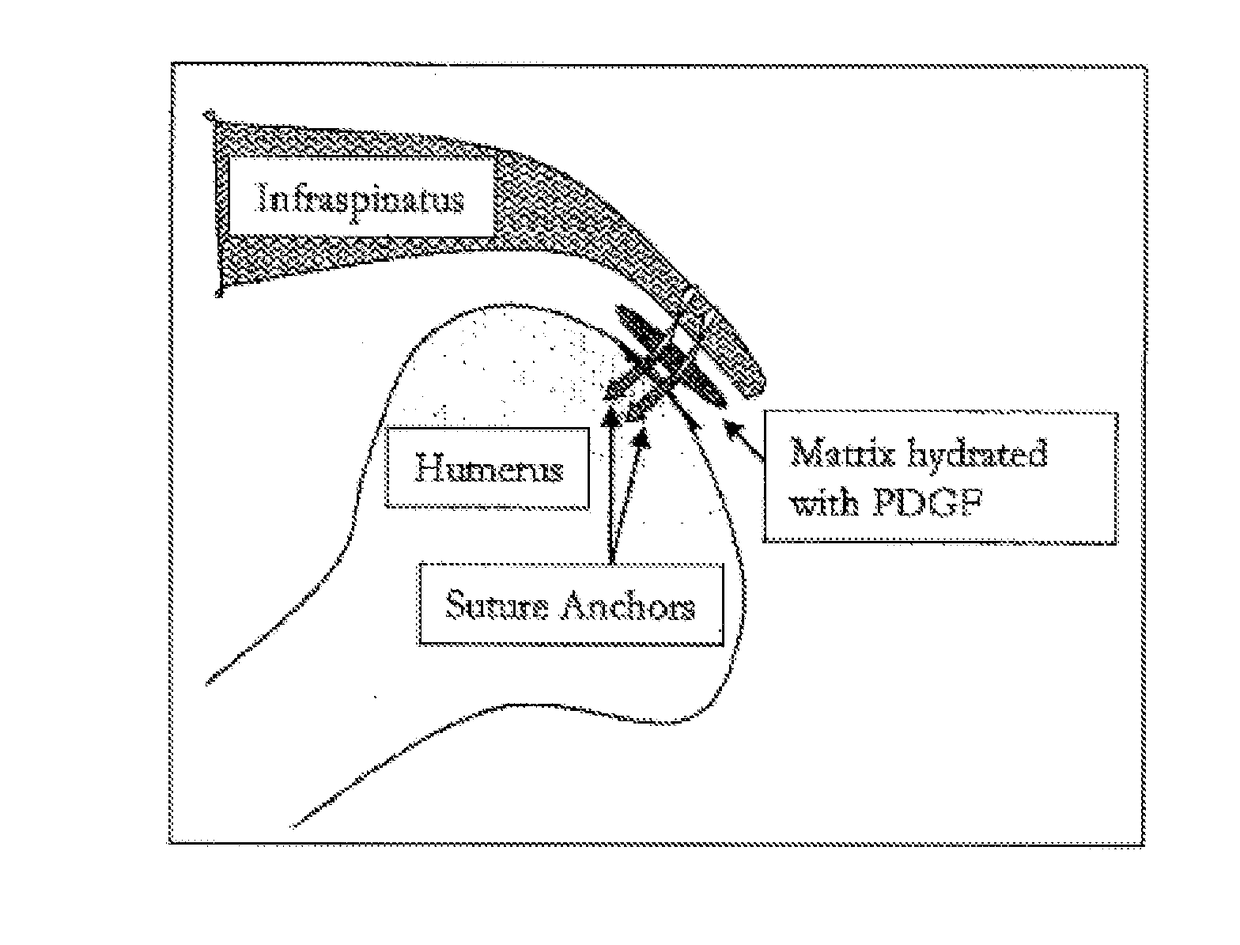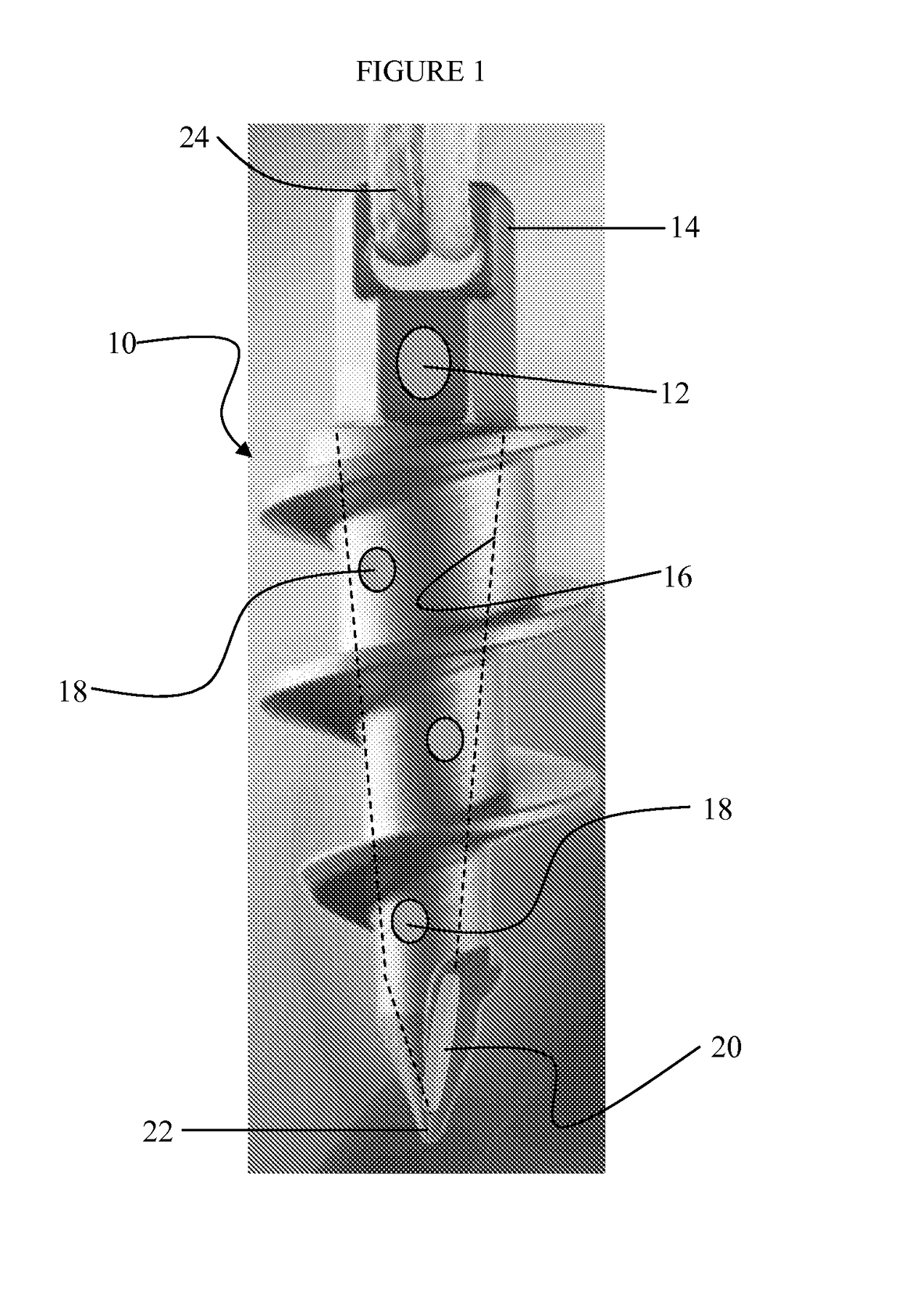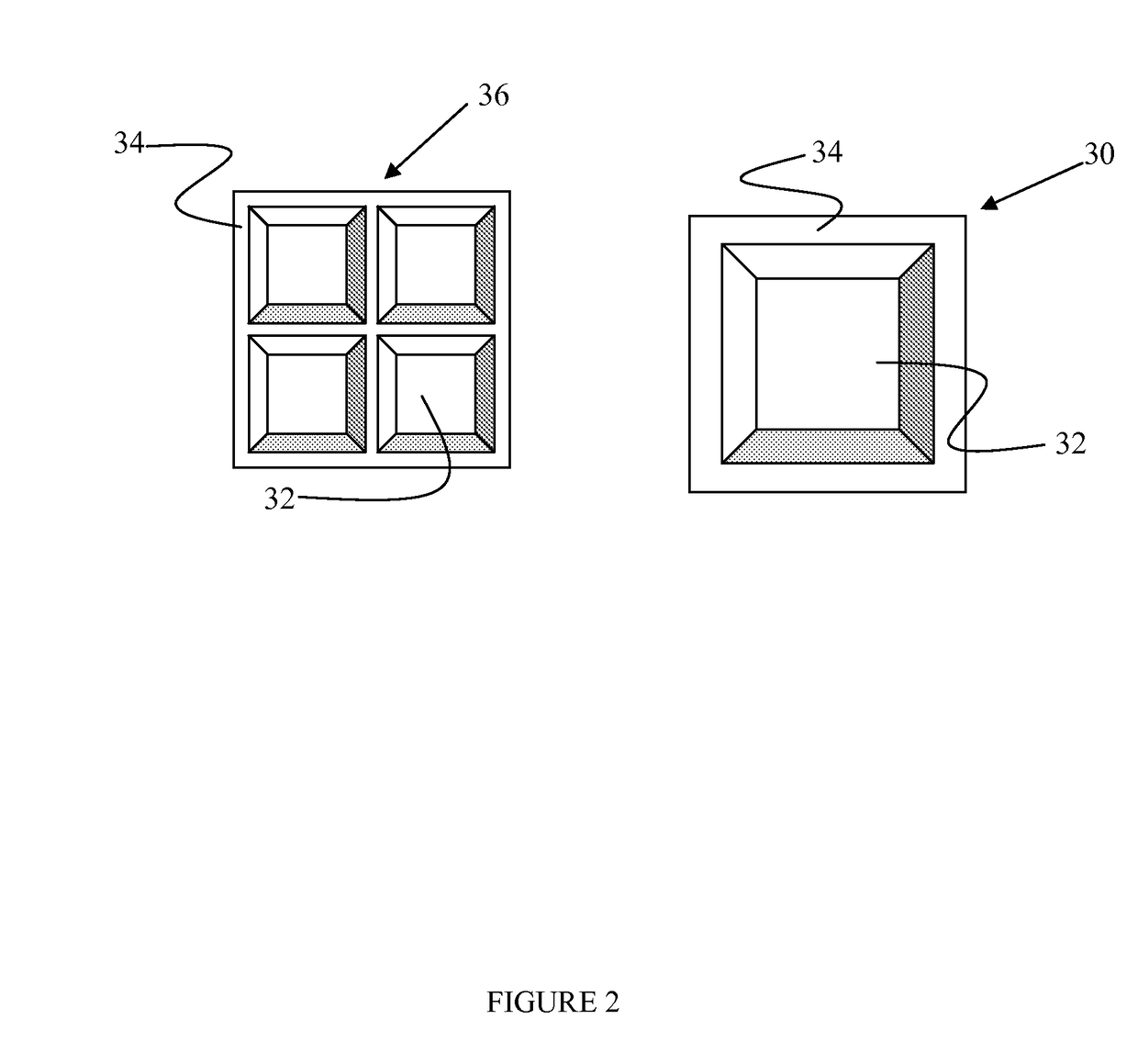Compositions and Methods for Treating Rotator Cuff Injuries
a technology for rotator cuffs and compositions, applied in the field of compositions and methods for treating rotator cuff injuries, can solve the problems of bursa often becoming inflamed, cuff tendons are susceptible to tears, loss of motion and weakness, etc., and achieve the effect of facilitating the healing respons
- Summary
- Abstract
- Description
- Claims
- Application Information
AI Technical Summary
Benefits of technology
Problems solved by technology
Method used
Image
Examples
example 1
Preparation of a Composition Comprising a Solution of PDGF and a Biocompatible Matrix
[0107]A composition comprising a solution of PDGF and a biocompatible matrix was prepared according to the following procedure.
[0108]A pre-weighed block of biocompatible matrix comprising β-TCP and collagen was obtained. The β-TCP comprised pure β-TCP particles having sizes ranging from about 75 μm to about 300 μm. The β-TCP particles were formulated with approximately 20% weight percent soluble bovine collagen binder. A β-TCP / collagen biocompatible matrix can be commercially obtained from Kensey Nash (Exton, Pa.).
[0109]A solution comprising rhPDGF-BB was obtained. rhPDGF-BB is commercially available from Chiron Corporation at a stock concentration of 10 mg / ml (i.e., Lot # QA2217) in a sodium acetate buffer. The rhPDGF-BB is produced in a yeast expression system by Chiron Corporation and is derived from the same production facility as the rhPDGF-BB that is utilized in the products REGRANEX, (Johnson...
example 2
Treating Rotator Cuff Tears with an Open Repair Method
[0111]Open repair is performed without arthroscopy, and is typically used for larger rotator cuff injuries. In accordance with this method of the present invention, a surgeon makes a two- to three-inch incision over the shoulder and separates the deltoid muscle from the anterior acromion to gain access to and improve visualization of the torn rotator cuff. The deltoid muscle should only be detached to the extent necessary to gain sufficient access to the rotator cuff injury. Following the rotator cuff repair procedure, the deltoid is repaired with sutures to close the longitudinal divisional of the muscle.
[0112]The surgeon then identifies the detached end of the involved tendon(s) (infraspinatus, supraspinatus, teres minor, and / or subscapularis) and the remaining tendon stump is cut away or removed from the humeral head preferably with a rasp, rongeur, scalpel or high speed bur and / or shaver. The surgeon may perform an acromiopla...
example 3
Treating Rotator Cuff Tears with a Mini-Open Repair Method
[0123]A mini-open rotator cuff repair procedure involves using both an arthroscopic technique for part of the process in conjunction with a limited open technique typically done through a 3 cm to 5 cm incision. This technique also incorporates an arthroscopy to visualize the tear, assess and treat damage to other structures within the joint (i.e., labrum and remove the spurs under the acromion). Arthroscopic removal of spurs (acromioplasty) avoids the need to detach the deltoid muscle. Thereafter, an arthroscopic decompression may be performed. The decompression may be followed by a release and mobilization of the tendons and placement of tagging sutures. These steps may be done arthroscopically or open. The final steps are done in an open procedure, but via the smaller opening. In particular, a small lateral deltoid split is performed in order to place tendon-gripping sutures on the previously mobilized cuff and to fix the c...
PUM
 Login to View More
Login to View More Abstract
Description
Claims
Application Information
 Login to View More
Login to View More - R&D
- Intellectual Property
- Life Sciences
- Materials
- Tech Scout
- Unparalleled Data Quality
- Higher Quality Content
- 60% Fewer Hallucinations
Browse by: Latest US Patents, China's latest patents, Technical Efficacy Thesaurus, Application Domain, Technology Topic, Popular Technical Reports.
© 2025 PatSnap. All rights reserved.Legal|Privacy policy|Modern Slavery Act Transparency Statement|Sitemap|About US| Contact US: help@patsnap.com



